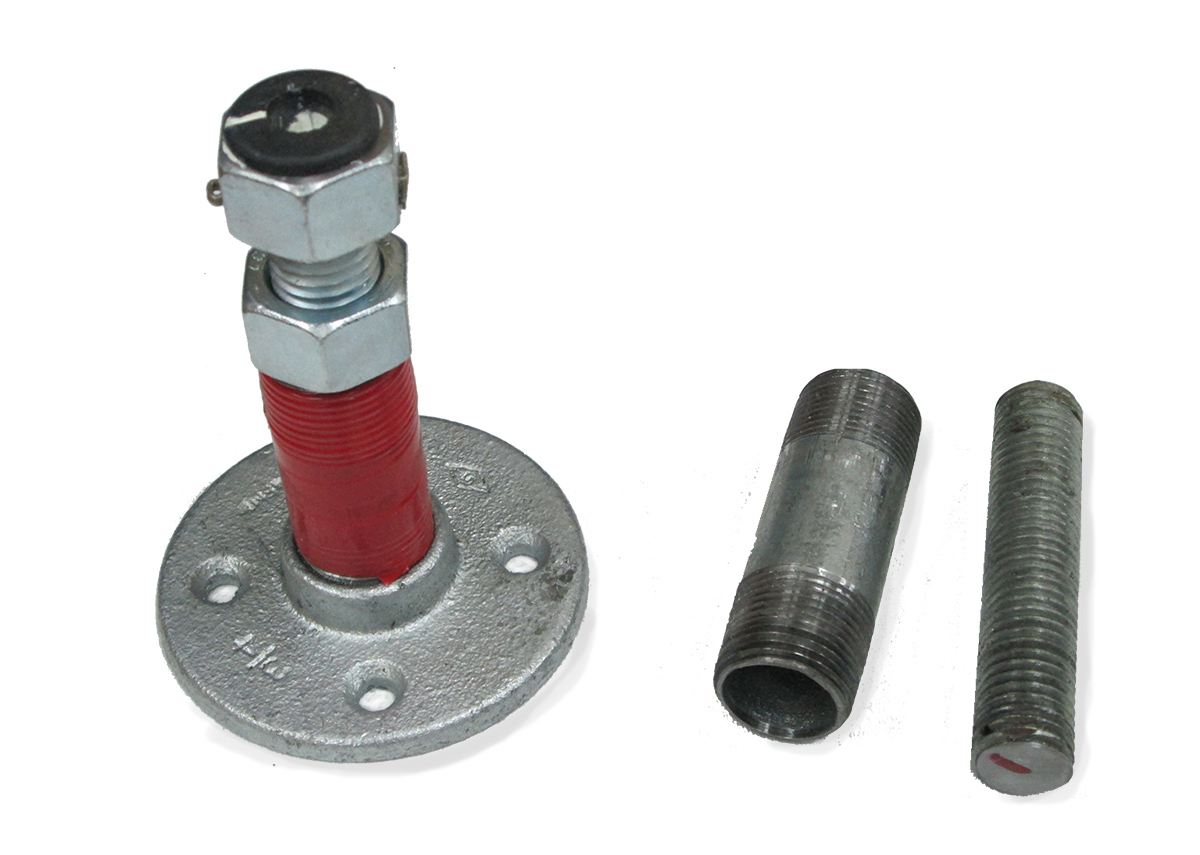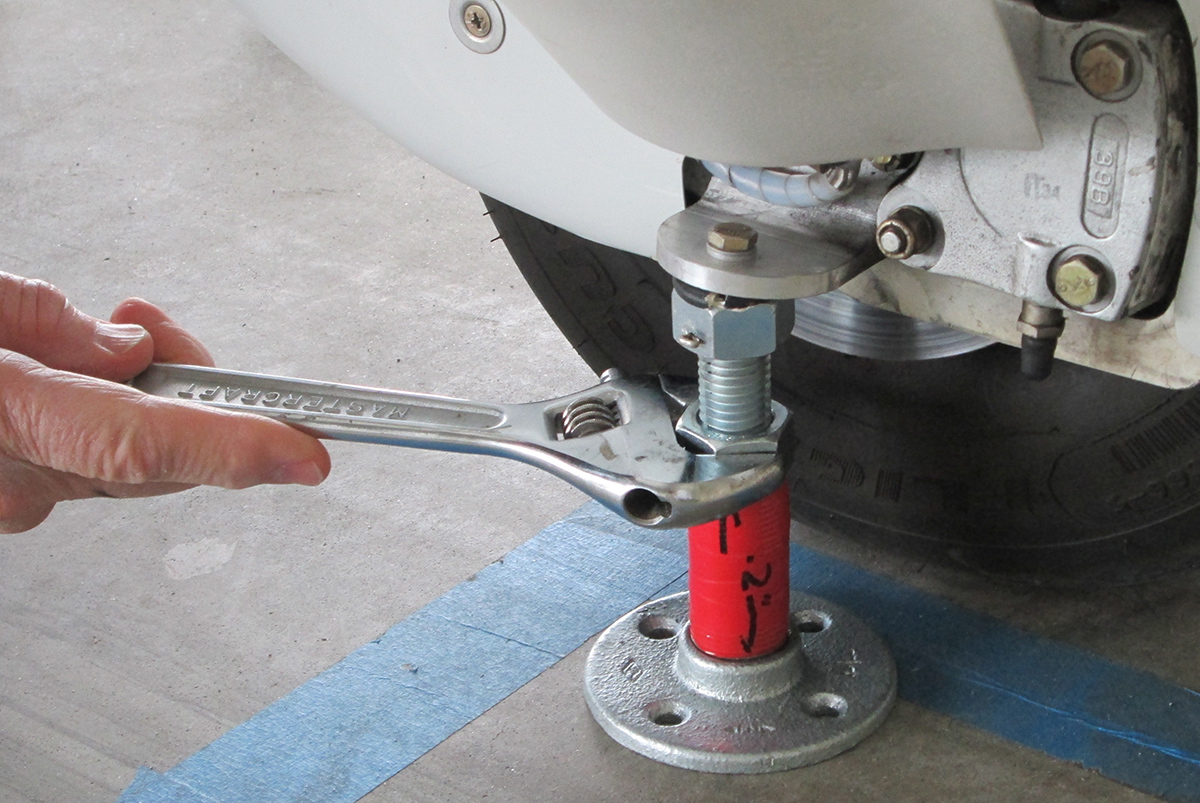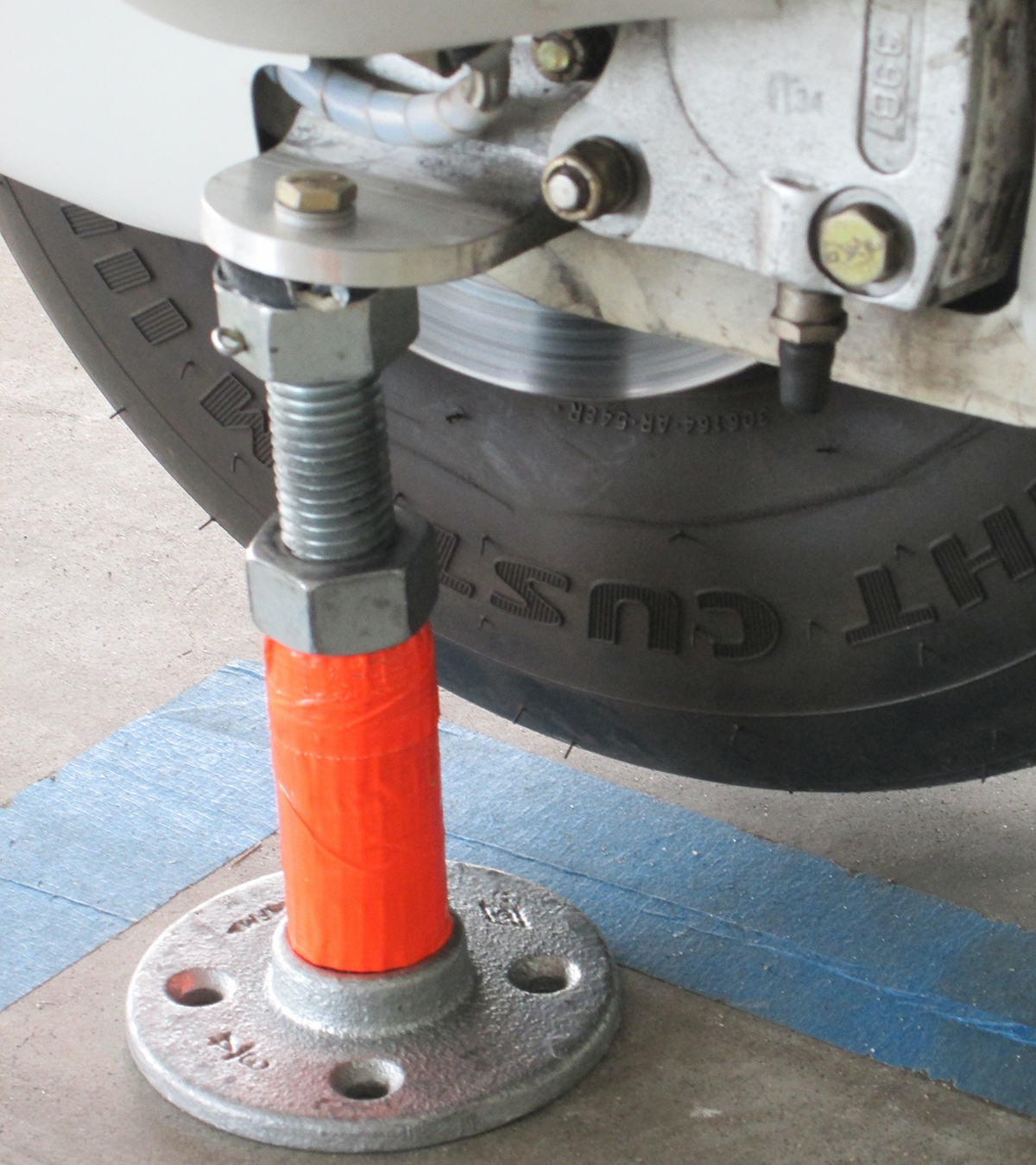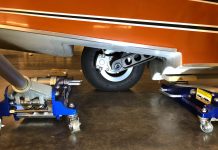Steve and I recently installed a set of Thomas Cox’s jack pads on our tricycle-gear GlaStar. These beautifully machined pads fit perfectly and will come in very handy whenever we need to jack up the plane so we can change tires or work on the brakes.
These jobs will likely be done at our hangar, where we have access to all kinds of tools, including a scissor jack. But what if we get a flat tire when away from our home field, or at a remote strip? Our traveling tool kit includes a spare tube in the event of a flat tire, as well as all the tools we might need for emergency repairs. But flying with a regular jack would be overkill and make the toolkit way too heavy.
Steve (like most homebuilders) loves a project, so he decided it would be a good idea to fabricate a custom jack that can not only be used in the shop, but can also be taken along on our cross-country flights. His goals were to build something that would work specifically with the Cox jack pads. It also had to be sturdy, compact, lightweight, and cheap.
So after a fair bit of mental planning, off he went to his favourite store—Home Depot.
He found most everything he needed in the plumbing department: a cast floor plate that would support the weight of the plane, a hollow length of pipe with inside thread at both ends, a length of solid threaded rod, and a couple of large nuts. Everything else required was already on hand at the hangar.
Several hours later, after building a couple of prototypes, he came up with something that works just great. It provides excellent support for a tire change, weighs only 1.5 lbs, and easily fits into our tool kit. Plus, it cost less than $10.
Here is a brief description of how Steve’s jack works, as well as a list of the materials and steps for fabrication, in case you’d like to build one for your plane.
How it works
The base of the jack is composed of a hollow pipe which is permanently screwed into the floor plate. The upper part of the jack is made from a length of solid rod with a 3/4” nut threaded onto it, plus a second 3/4” nut secured at the top. A rubber grommet is added to the top nut, providing cushioning and grip for the jack pad. With the base and upper part assembled and placed below the jack pad, the plane can be raised/lowered by using a 3/4 wrench to turn the nut on the threaded rod.
Materials and tools
- One round cast floor plate, threaded for 3/4” pipe (the plate is 3- 3/8” in diameter)
- One 3” piece of hollow pipe with 3/4” threading at each end (you might want to get a couple of shorter pieces as well – see notes below)
- At least 3 inches of solid threaded rod (this generally comes in lengths of 2 or 3 feet)
- Two 3/4” nuts
- Cotter pin
- A rubber grommet (optional) (we used a firewall grommet, cut in half )
- Glue to secure grommet to nut (we used 3M 5200)
- Light grease (to lubricate the rod)
- Hacksaw to cut rod to length
Fabrication
Build the base by inserting the hollow pipe into the floor plate. Tighten securely.
Cut a 3” piece of threaded rod using a hacksaw (see notes below).
Screw one of the nuts onto the top of the solid rod, but only halfway, so there is a hollow area at the top. Note: the Cox jack pads are drilled and threaded to accept a small AN bolt, which is secured by a nut on the lower surface. By leaving a hollow at the top of the large nut on the jack, the AN nut affixed to the jack pad can nest securely at the jacking point.
Secure the top nut to the solid rod by drilling through both parts and adding a cotter pin.
Glue a rubber grommet onto the top of the nut (optional). Test to make sure it will interface securely with your jack pad.
Screw the 2nd nut onto the solid rod, about 1 1/2” from the bottom. Lightly lubricate the rod and drop it into the base.
Notes
Tests on our plane indicate that approximately 1-3/8” travel is needed to lift the wheel off the ground so that the tire can be removed.
The length of pipe & threaded rod you’ll need for your airplane depends on your tire/ wheel size and may need to be determined through trial and error.
For safety, make sure that at least 1” of threaded rod remains inside the base pipe when the wheel is jacked up.
For additional lifting height, a block of wood could be placed beneath the plate.
If you have a flat tire, the jack pad may be resting too low to use the jack. In this event, you could fabricate another base, using a shorter piece of pipe (remembering that a minimum length of rod must remain in the base for stability). Alternatively, you could roll the tire onto something that lifts the flat tire higher off the ground, or if on soft ground, dig down so the jack sits lower than the tire.






